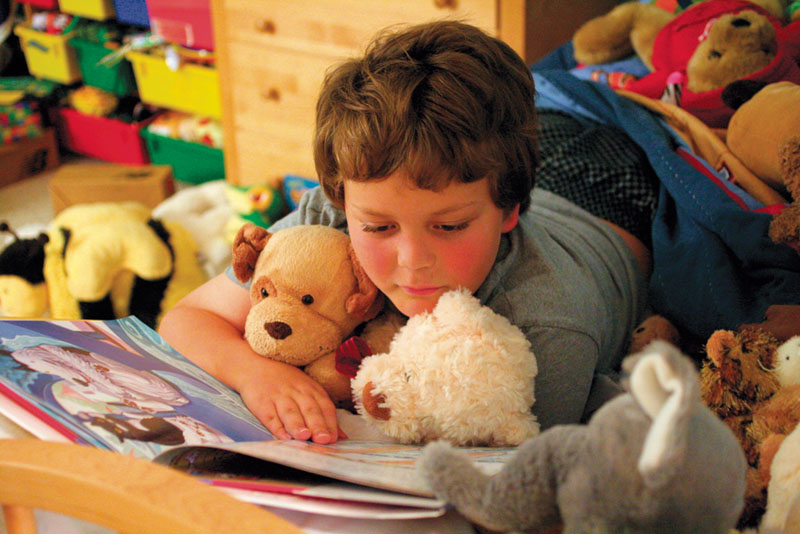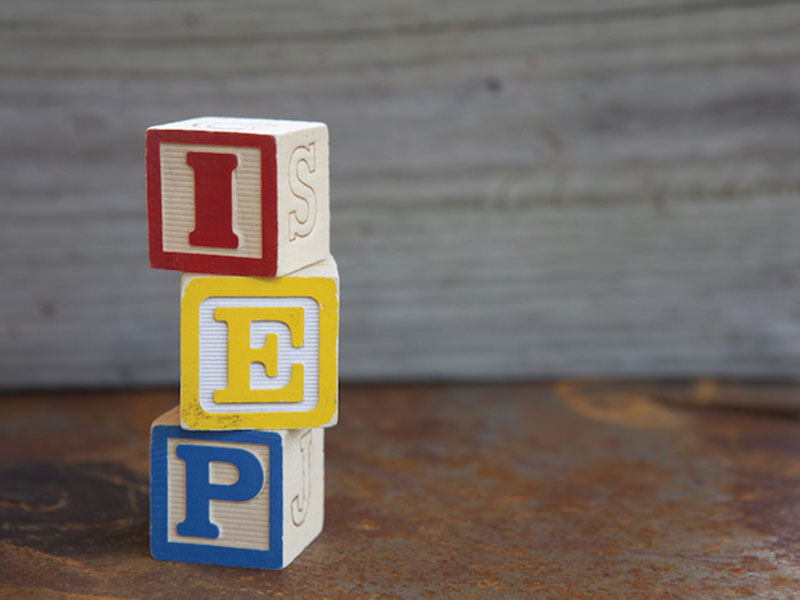 It happens every year. A child comes home from school and says their classmate was taken out of the room during a subject lesson or they were taking a test and their classmate was able to have an extra 20 minutes to work. The child wonders why their classmate is getting special treatment. These accommodations in the classroom occur because of a student’s Individual Education Program (IEP). In other words, the student is receiving a special education because they have some sort of disability.
It happens every year. A child comes home from school and says their classmate was taken out of the room during a subject lesson or they were taking a test and their classmate was able to have an extra 20 minutes to work. The child wonders why their classmate is getting special treatment. These accommodations in the classroom occur because of a student’s Individual Education Program (IEP). In other words, the student is receiving a special education because they have some sort of disability.
What is an IEP?
An IEP is the product of the Individuals with Disabilities Education Act (IDEA) which promises that, within every school district, children with a disability are entitled to a free and appropriate public education. Part of this education includes an IEP.
“Every year, when the child is eligible and receiving special education, the parents and teachers and whoever else is involved with working with the student sit down and have a meeting and talk,” said Julie A. Yindra, Director of Student Access Services at Hofstra University. “[The IEP] outlines what the specific goals are for the student…and the whole idea is that it’s the document that binds the school to the agreement of ‘this is what we’re going to work on with the student.’”
Along with including a student’s individual goals, the IEP also includes any sort of therapy and other accommodations that must be made for the student during the school day. The document is rewritten with each academic year to include new sets of goals and expectations.
The goals made for the student are broken up into smaller benchmarks so teachers can have “a guideline for what they’re doing with the student to make sure that [the student is] making progress toward the goal at the end of the year.”
 How does a student become eligible to receive an IEP?
How does a student become eligible to receive an IEP?
Before writing and integrating the IEP into their education, the student must first be deemed eligible for special education. Either a parent or teacher may notice that something isn’t quite right with the student’s progress in the classroom, and then the parent will contact the school or the school will contact the parent. There is a referral process in which “somebody has to determine that the student is struggling in some way in the school setting,” Yindra said.
In the case of an obvious physical disability, eligibility is near automatic. For something like a learning disability that must be diagnosed, the student must be referred for an evaluation. A committee within the school, usually consisting of special education professionals, the school psychologist, regular education teachers and an administrator, will meet and review the referred student’s case.
The committee will screen the student for sensory issues such as vision and hearing problems. Once those issues are ruled out, the committee will recommend that the teacher try new teaching strategies or provide an accommodation to help the student perform better in the classroom. If at this point the student is still not doing better, more extensive testing is done. An IQ test and a test of academic achievement will be done to measure how well the student is doing in subjects taught in the classroom in comparison to their peers.
“They start looking for holes, they start looking for things that might be causing a problem,” Yindra said. “Once all the testing is done everybody gets together and looks at all of the results, all of the observations done by teachers. Then they look at the evidence and say, ‘is there evidence that there’s a diagnosable disorder here? Is there evidence that he should be provided with some additional support services in order to help him do better in school?’ That’s when they make the determination about placement in special education.”
When looking for a diagnosable disability, the committee looks for carryover in multiple environments; they look for a consistent pattern of lack of educational attainment that has no other explanation.
Where does the student go for testing?
The student doesn’t need to go outside of the school to receive testing. If the school psychologist is licensed to do so, they will administer the IQ test. Achievement testing may be performed by a teacher or special education teacher.
How does the student receive special education?
During the IEP meeting when the goals for the student are decided on, placement of the student is also determined. It may be agreed that the student will be in their regular classroom for the entire day, or arrangements may be made to have the student pulled out with a specialist for instruction during certain subjects. Placement is dependent on the extent of the needs of the student.
Yindra said that today the most common method of administering special education is the inclusion model.
“The inclusion model is a general education teacher in a regular classroom who team teaches with a specially trained teacher in special education, and they work together to make sure that all of the students’ needs are met within the regular classroom.”
At some point in the student’s academic career it may even be decided that they no longer need special education.
“Students exit in and out of special education all the time,” Yindra said. “It doesn’t mean that they’re cured; it means that they’re functioning independently in the environment without any special considerations.”
How early in life should the student be referred?
Early recognition and intervention is very important for the student. Getting them the help that they need as early as possible is crucial to helping them learn and keep up with their peers.
It is especially important for parents to be involved as soon as they notice something is amiss and to reinforce positive behavior from the classroom. If a teacher is using a gold star system to encourage proper behavior from the student, the parents should be cooperating with the teacher by utilizing that system at home in order to keep the message to the student consistent.
Getting children the help they need is essential to their success, so Yindra stressed that parents must not be afraid to reach out.
“Part of the problem…is that parents are reluctant to engage in the referral process and the identification and the eligibility process,” she said.
Yindra also stressed the importance of not being afraid of disability and its associated labels and the blame that parents may put on themselves when their child receives a diagnosis.
“Disability is not inherently a bad thing,” she said. “What’s bad is our environment is not designed for everybody to have equal access. That’s the problem. Disabilities are simply part of the spectrum of human condition.”


















